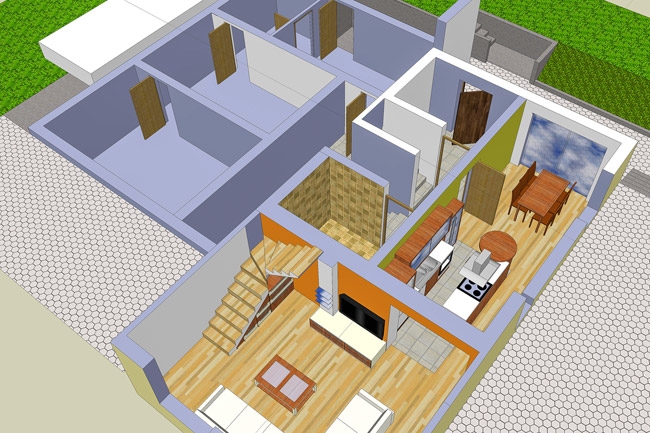Have you ever thought of seeing your dream home before it’s even built? Walk through the hallways you designed, peer into sunlit rooms, and feel the flow of space—all from the comfort of your couch. This is the power of architectural walkthrough animation. But have you ever wondered what goes on behind the scenes to create these captivating experiences? Buckle up because we’re about to dive into the fascinating world of 3D architectural walkthrough services.
Technologies behind 3D Architectural Walkthrough Services
Architectural walkthrough animation technologies are pretty sophisticated, combining elements of 3D modeling, texturing, lighting, and rendering to create lifelike simulations of buildings and spaces. The complexity arises from the need to accurately represent physical properties such as materials, lighting, and landscapes to ensure that the virtual model conveys a realistic and immersive experience. Advanced software tools like Autodesk Revit, 3ds Max, and Unreal Engine are commonly used, requiring significant expertise to operate effectively.
These technologies demand a deep understanding of architectural design and digital animation, making it a specialized field that integrates art, architecture, and technology. The process also involves meticulous attention to detail and substantial computing power to handle the data-intensive tasks involved in rendering high-quality animations. As a result, mastering these technologies and producing high-quality walkthroughs require both technical skill and creative vision.
3D Modeling
The first step on this technological journey is 3D modeling. Think of it as the digital blueprint of your building. Using specialized software, architects meticulously create a three-dimensional representation of the structure, complete with walls, floors, windows, and furniture. This model serves as the foundation upon which everything else is built. It’s like having a digital dollhouse but infinitely more versatile and detailed.
The Art of Lighting
Next comes the magic of lighting. Lighting isn’t just about making things visible in a walkthrough; it’s about setting the mood and atmosphere. Skilled technicians use software to strategically place virtual lights strategically, mimicking how natural and artificial lighting interact in a real space. This can transform a sterile white box into a warm, inviting living room or a sleek office bathed in cool, focused light. Imagine the difference between a dimly lit basement and a sun-kissed beach—that’s the power of lighting in the virtual world of 3D animation walkthrough services.
Texturing the World
Bringing Surfaces to Life: Now, let’s add some texture! Imagine flat, featureless walls—not very inspiring, is it? Here’s where texturing comes in. Textures are essentially digital images applied to the surfaces of the 3D product. This could be anything from the rough brick of an exterior wall to the smooth veneer of a kitchen cabinet. Textures add a layer of realism and detail, making the virtual space feel more tangible and immersive.
Animating Your Design
With the foundation and the scene set, it’s time for the animation! This is where the walkthrough truly comes alive. Animators use specialized software to define the camera movements, creating a virtual tour that guides viewers through the space. They can simulate walking, flying, or even teleporting, allowing viewers to explore every nook and cranny of the design. Think of it as choreographing a virtual ballet, where the camera is the dancer and the building is the stage.
Rendering Your Work
Once everything is in place, it’s time for the grand finale: rendering. This is where the computer takes all the information—the 3D model, lighting, textures, and animation—and calculates how it would appear in the final video. It’s like having a digital artist painstakingly paint a picture based on all the elements we’ve assembled. Rendering can be time-consuming, but the result is stunningly realistic and immersive with the help of a 3D walkthrough animation company.
Advanced Technologies Pushing the Boundaries of 3D Walkthrough Animation Services
The world of 3D architectural walkthrough companies is constantly evolving. New technologies are emerging that push the boundaries of what’s possible. For example, virtual reality (VR) allows viewers to interact differently with the design. Imagine feeling the warmth of a virtual fireplace or walking out onto a virtual balcony with a breathtaking view. Real-time rendering engines make it possible to create walkthroughs with incredible speed and detail, allowing for faster design iterations and client feedback.






